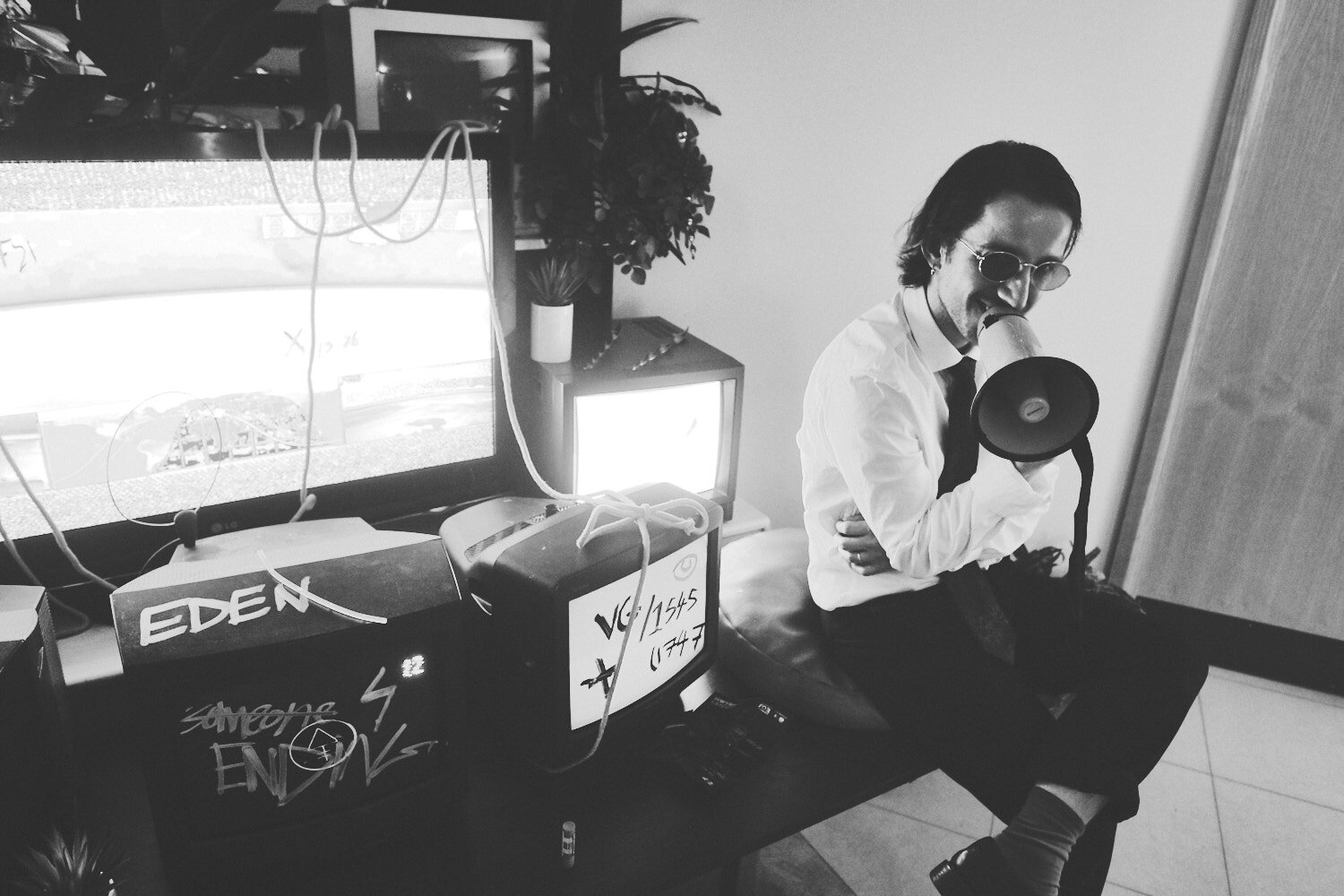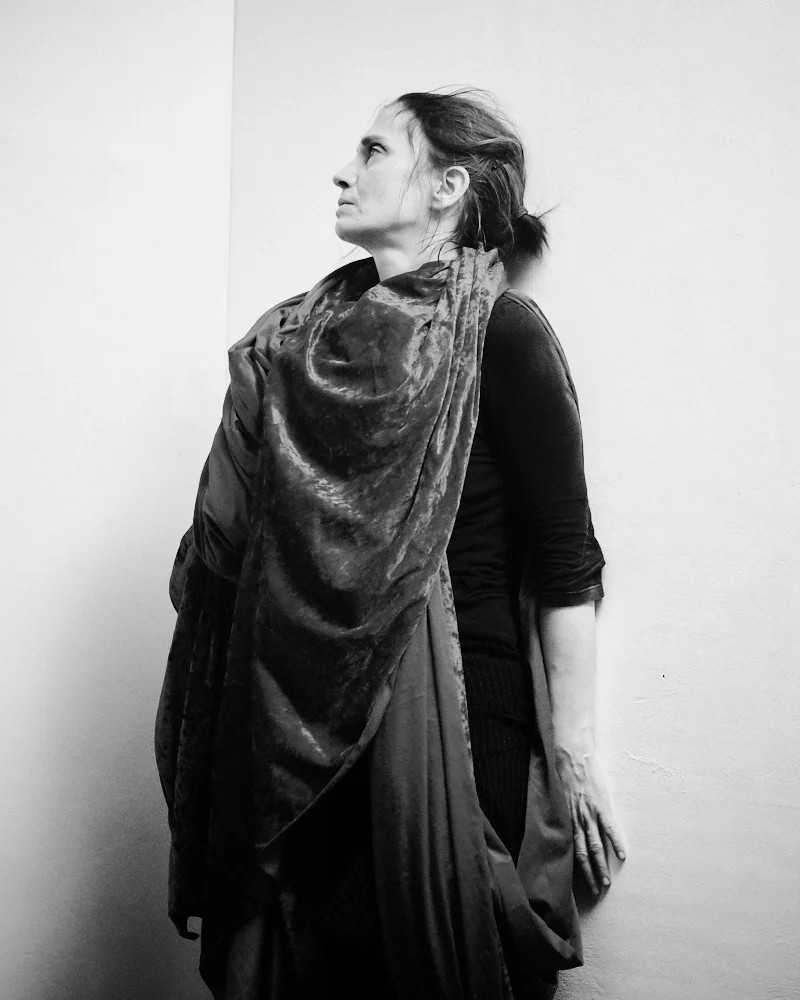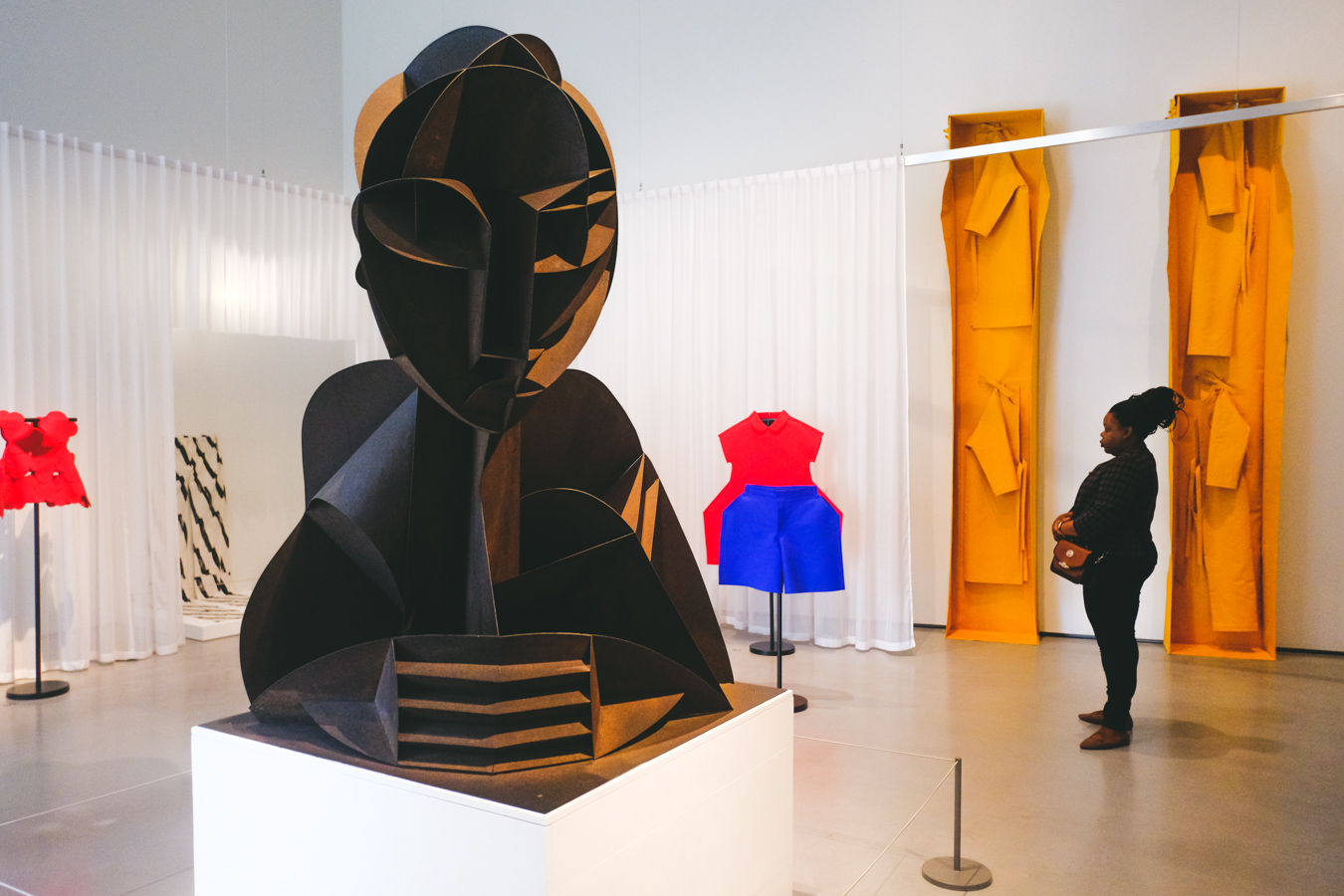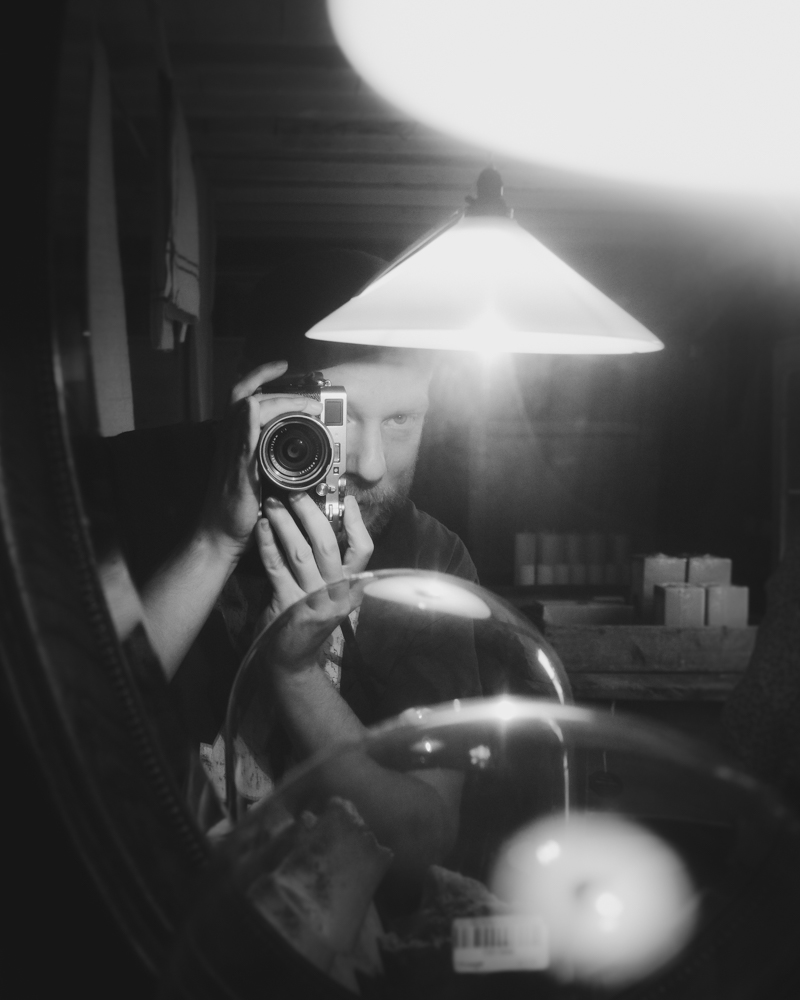Shot using the X100F and the X-T3 with the 56mm f/1.2, 35mm f/1.4 and the 16mm f/1.4 lenses - processed in Capture One
Back on a summer’s night in mid-July Cardiff Museum was given over to celebrate the achievements of space travel, and with it came something of a carnival as the arts collective Tactile Bosch filled the place with their curious space-age visions. There was plenty for a fan of the space program to enjoy; with broadcasts of the Moon landing and outer-space exhibitions, with displays built around the great pioneers of space travel – Gagarin and Grissom, Armstrong and Aldrin – and the technology they used. The twin efforts of NASA and the CCCP inspiring various degrees of awe.
Yet Britain was an outsider bereft of its own space-program. It looked upon the giant leaps made by the United States and the Soviet Union with admiration, but its own post-war vision of the future was far removed from the can-do frontier heroics and collective idealism of the two superpowers. The 1950’s comic series Dan Dare took Britain into space at the forefront of a United Nations effort to explore the solar system. It was a Utopian vision gloriously depicted by Frank Hampton’s gorgeous artwork, with the science and plot provided by a promising young writer called Arthur C. Clarke. Humanity jointly explored the stars; Capitalists, Communists and those in-between hand in hand seeking out new life and giving it a hearty handshake.
Outside the pages of this delightful comic book things didn’t look quite too rosy for our fictional space-faring hopefuls. Ask the man in the street in Britain in the 1950’s who the head of the British space program was and he would probably have given the name of Bernard Quatermass - fictional head of the equally fictional British Experimental Rocket Group. Operating from somewhere in the bucolic English countryside, his space program didn’t have the best of luck. One year he would launch astronauts into space only to have them return as deliriously insane men slowly transforming into alien creatures that were half-man, half-cactus and all-homicidal. The next he would attempt to get funding to build a Moon-Base, only to find his budget slashed by Government ministers who’d stolen his plans to build an Earth-bound colony for a malevolent hive-mind intelligence from outer-space. The final straw came when his trip to Mars was derailed by the shocking revelation that he - along with most of the rest of the population of Earth - were in fact the bio-engineered descendants of insectoid Martians who’d colonised our planet long, long ago. It was all a bit upsetting for poor old Professor Quatermass, but each week the pubs emptied when his TV show hit the BBC airwaves, such was his popularity.
The beauty of the British space-age both dystopian and utopian was that it all looked home-made. Goldfish bowl helmets and boiler-suits spray-painted silver. Control panels made out of bric-a-brac. And because there was no real space program in Britain, we could dream of our trip to the stars as having originated from some boffin’s oversized back-garden workshop, with interplanetary vehicles knocked up from a few spare V-2 rockets left over from the war.
But despite all this thanks to David Bowie and Delia Derbyshire we were pretty much guaranteed a kick-ass soundtrack. With around two-hundred and forty thousand miles to the moon, you’re gonna need some tunes.
And tunes there were in Cardiff Museum, provided by the superb band MADI and their neon-glam vision of the future, with the smooth strutting vocals of Maddie Jones echoing in our silent disco headphones. ( And if you want to know more - and hear more - about them and the music they make then you should skedaddle over to their website here at https://www.madibanduk.com - they really are jolly good. )
And there was a feast for the eyes also as Welsh arts-collective Tactile Bosch provided the homespun weirdness; from echoes of cult brainwashing programs and Martian hob-goblin shadow-puppets through to silvery retro-aliens infiltrating the crowds, with sinister Men in Black observers spying on us from the balconies. It was all very bizarre, and very photogenic.
MADI
tACTILE bOSCH
This series was shot mostly on the Fujifilm X-T3, which I found to be pretty capable, though not infallible, in low-light. There wasn’t much doubt for me on the night that I’d be looking at everything in monochrome through the electronic viewfinder. For me classic British science fiction has always been in black and white, and little wonder since it was a heady rocket-age blend of film-noir and horror. With the images I wanted to capture a little of those early Hammer movies, that gritty black and white science-fiction feel of the 50’s and 60’s, aping the great films that Roy Ward Baker and Val Guest brought us. I wanted the gritty clarity and inky-black shadows, the clipped highlights and the slight plasticity of film. It took me quite a while to figure out how best to do it in the image processor Capture One. I don’t think I’m quite all the way there yet, but I’m on my way, and I feel I’ve finally got a handle on how to sharpen my images in Capture One. I feel this is a look I’d like to return to often for low-light work, especially involving the music and arts scene.
Gosh, this has been a bit of a rambling, unfocused post. Much like the British space program, cough cough. Still, I hope you all enjoyed it. And remember to all of you out there, “Keep watching the skies!”


















































